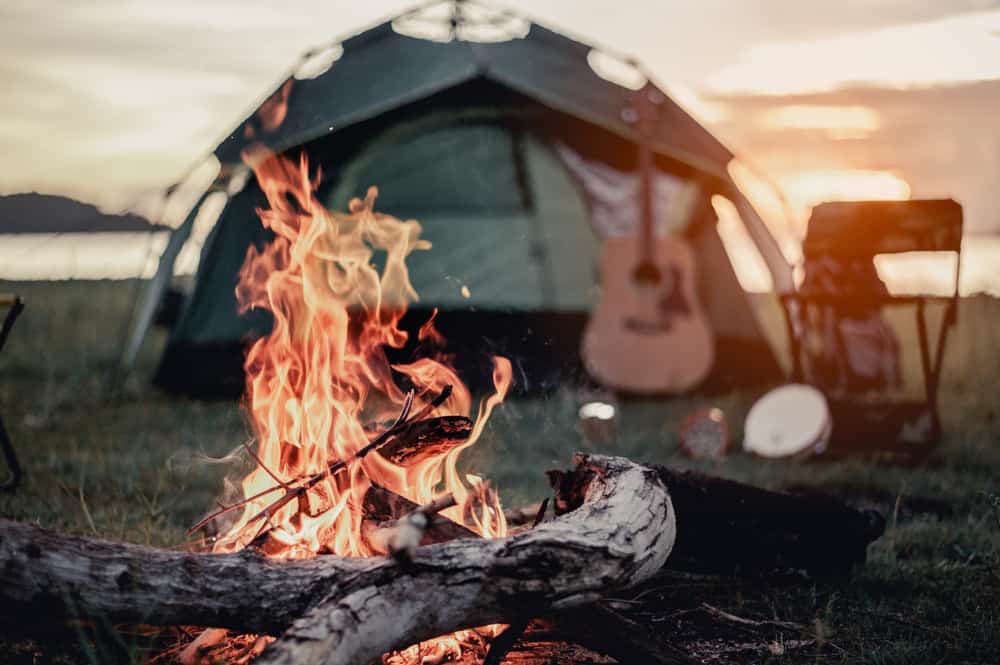Besides impressing your friends, having the skills to build a good campfire during your trip will enhance the camping experience. Although they are many types of camping equipment that are far more efficient for creating fires, they just make the conventional campfire seem mediocre. Henceforth, if you acquire the skills to build a decent campfire then it can make an enormous difference.
Purpose of campfires
In the past, before matches or gas torches were around making an appropriate campfire was vital to any outdoor activity. Campfires were the main source of warmth against cold weather and cooking.
Besides heat, a campfire serves as a deterrent to wild animals and makes the location more secure. Animals like bears, wild dogs, and other creatures avoid coming near the campfire place. For this reason, most campfires always remain lit through out the night.
3 things needed to make a fire
Although the art of building campfires may be partially lost due to the availability of matches, it is still a vital addition to any camper’s list of tricks. The following is a short guide with the help of which one can build successful campfires:
Firstly, a fire requires three main components which are fuel, oxygen, and heat. Next, starting off fast is important when beginning campfires.
Oxygen
Although the oxygen around us might seem readily available, it is not always obtainable when making a campfire. Henceforth, you must arrange the fuel in such a way as to supply an adequate amount of air. In addition, this air supply can also be amplified by fanning the existing flames or by blowing in the cinder.
Heat
The heat required for producing a campfire is normally produced through means of friction. For this reason, you will have to utilize several techniques for producing it. These techniques may include rubbing two sticks together, using flint stones, etc.
Fuel
All three components go hand in hand as previously mentioned. You will not get impressive flames If you do not have the correct fuel. In a like manner, fuel is also necessary to keep it burning, so it is important to know about each type.
The two main types of fuel, tinder, and firewood, each play distinct roles. If you try to heat the firewood directly, your attempts will most likely end with poor results. Firewood takes a little more time to start burning but will last longer when does. Tinder, on the other hand, is easily flammable and burns quickly. Therefore, you need to use tinder in the initial stages to provide the firewood with enough heat until it ignites.
The best tinder is dry twigs, leaves, sticks, and bark. Most of these should be available at your camping location.
Some common campfire designs are:
Tepee fire
For rapid fires that are long-lasting at night, tepees are a good option. This method is perfect for boiling water and for all other campfire purposes.
To set up a tepee, you must vertically place and balance the large burning wood next to each other around the tinder. This ensures that the heat and gas produced by the tinder are equally distributed amongst long pieces of wood. This method required a lot of tinder so you will need to have enough on hand.
Pyramid fire
Although it might be a little difficult to begin this kind of campfire, this method burns very well and produces a good amount of charcoal which can be reused later.
To set up a pyramid, start off by placing the first set of logs horizontally on the ground. Next, make another layer on its top of the next using shorter logs. Continue doing this until you slowly form the pyramid.
Parallel fire – With a Parallel fire setup, the tinder is positioned amid two logs. As a result, This method results in an effective burning fire since the logs are also burnt from inside.
Star or Indian fire
Normally seen in old western movies, this kind of fire is classic and basic.
To set up, lay out 5 pieces of logs just like the spokes of a wheel or star-shaped. Place your tinder in the middle of the logs. To maintain this type of fire, just push each log to the center as the ends are burned away.
They are many other types of campfire methods with their own advantage. Regardless, as with any type of survival skill, you will need to practice to make it perfect.
When left unattended or misused, a campfire can cause grave damage to the property. For this reason, you should always take preventative measures to avoid any accidents. Here are a few safety measures you can follow after you are done using a comp fire:
Campfire safety tip:
Always douse the fire with water even if it appears completely inactive. Likewise, if there are any leftovers you can use a shovel or something similar to cover them with dirt and dust.
Parents often tell their children not to play with fire because it can be dangerous. Although this may be true, you should treat it with respect instead, because it can save as well as demolish.

